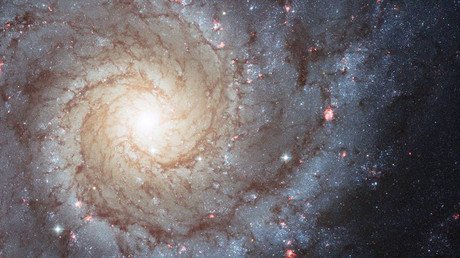NASA's Juno mission snaps mesmerizing images of Jupiter’s cloud canopy (PHOTOS)

The NASA Juno spacecraft has beamed back a wealth of information on our solar system’s largest planet and captured breathtaking images of the cloud canopy that is home to some of the largest and most violent storms in our galaxy.
The Juno spacecraft was conducting its ninth flyby of the gas giant at an altitude of some 11,747 miles (18,906 kilometers) from the tops of Jupiter’s clouds on October 24. For context, that is roughly the distance between New York City and Perth, Australia.
Juno captured these stunning images of a cloud system in Jupiter’s northern hemisphere. The image resolution is roughly 7.75 miles/pixel (12.5 kilometers/pixel).
☁ Jovian Tempest ☁ This color-enhanced image of a massive, raging storm in #Jupiter’s northern hemisphere was captured during my latest flyby of the gas giant planet https://t.co/VYmieVoDQxpic.twitter.com/UuVCAbHZ17
— NASA's Juno Mission (@NASAJuno) November 16, 2017
I’ve got the #Jupiter blues. See Jovian clouds in striking shades of blue in this new color-enhanced image https://t.co/EQ0jT6kE0Bpic.twitter.com/E4zn1Vawci
— NASA's Juno Mission (@NASAJuno) November 30, 2017
Citizen scientists Gerald Eichstädt and Seán Doran put a lot of work into processing the incredible images.
Juno was launched on August 5, 2011 and arrived at Jupiter nearly five years later in July, 2016. The craft will conduct 12 close flybys in total to discover more about the planet's origins, structure, atmosphere, and magnetosphere. It is due to complete its mission in July 2018, and may suffer a similar, fiery end as its cousin spacecraft Cassini. There is a possibility that NASA will extend the mission, however.
Juno's next close flyby of Jupiter will occur on December 16.
Stunning detail of Jupiter's mysterious Great Red Spot captured in 'closest ever' photos https://t.co/TOrV7PfAaG
— RT (@RT_com) July 12, 2017














